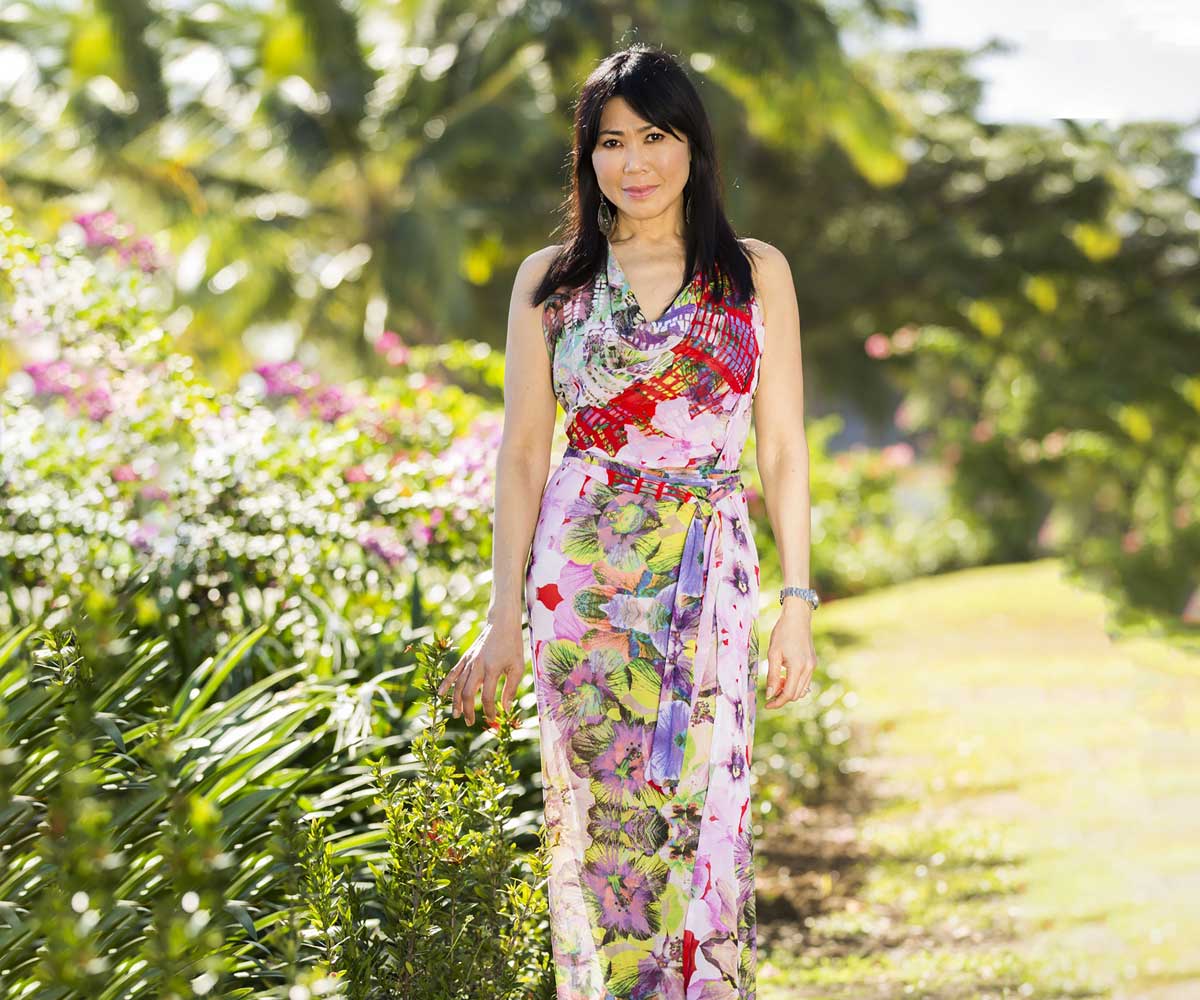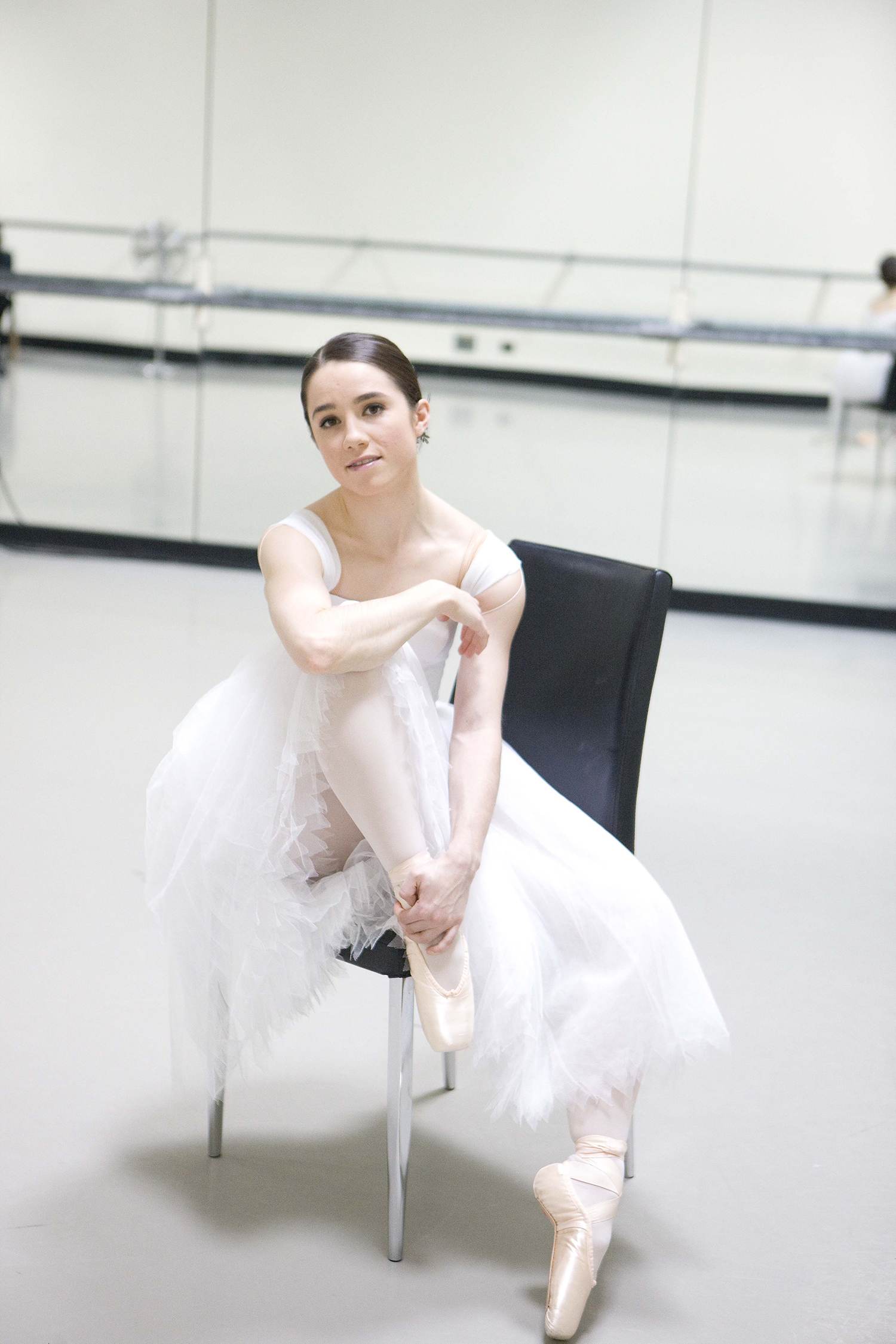Like many little girls her age, my eight-year-old granddaughter Sadie is in love with dance. What is it that draws her to spend hours turning her toes out and wafting her arms about in varying shades of pastel tulle? Is it the allure of performance? The thought that one day she, too, might stand in the glare of the footlights and feel the thrill of audience applause?
The Royal New Zealand Ballet is about to embark on its Christmas season of The Nutcracker. Sadie and I will be in the audience soaking up every spectacular moment, lost in the Sugar Plum Fairy’s magic.
Rhiannon Fairless is one of those little girls who went on to turn her love of dance into a career. She’ll be in the cast of The Nutcracker and at the time of writing she was rehearsing, waiting to find out which role she’ll be assigned.
“We are constantly being assessed for roles; that’s why we have to be so focused.”
It’s a tense, gruelling time for the dancers as they compete to catch the eye of the choreographer or the ballet director. There are no guarantees.
The dancer who was centre stage in the previous production may well miss out this time.
“It’s so hard, it messes with your psyche,” Rhiannon tells me frankly.
We meet during Rhiannon’s lunch break at Wellington eatery Logan Brown. She has ordered a lightly grilled fillet of fish on a bed of noodles; I notice she leaves the noodles.
“Dancers definitely have to look a certain way but we also have to have the energy to dance for eight hours a day. I find it really hard if I don’t eat.”
There is no ideal body weight or shape, she insists. It very much depends on your artistic director’s preference.
The ballet company’s new and highly acclaimed artistic director is Patricia Barker, a former prima ballerina and artistic director of the Grand Rapids Ballet in Michigan. Patricia, Rhiannon believes, is keen on the long, lean, classical form.
Long and lean is what Rhiannon is – a willowy 5ft 9in or 175cm – her dark curly hair tucked neatly behind her ears.
The 24-year-old moves with a dancer’s easy grace.

Rhiannon Fairless turned her love of dance into a career.
She began dancing by chance. Her mother Debbie Watkin was a talented dancer herself and was accepted for the New Zealand School of Dance at 15.
Debbie’s father, though, was adamant that dancing wasn’t to be the career for her and insisted she attend university instead. Debbie went on to become a psychologist but she retained her love of ballet and encouraged it in her two children.
Rhiannon’s older brother Walter was the first to show an interest in dance. He had enrolled in tap lessons at the local dance school. Walter was selected to have a special lesson and had to prepare a solo piece to perform. At the last minute he had an attack of stage fright and refused to do it.
Rhiannon, aged four, and two years his junior, had no such reservations and offered to do the solo in his place. They stuffed his tap shoes with tissue paper for her and she did the piece. She never looked back.
What was it she loved about tap?
“It’s the sound, the rhythm on the floor. I love performing, showing off,” she grins.
Rhiannon began to focus on dance. Endless competitions followed but her mum wasn’t a pushy competition mother.
“She never wanted to be that parent, pushing their child.”
She did insist on a level of commitment from her kids if they were expecting her to ferry them to events all over town.
“‘You have to invest in this,’ she’d tell us. I remember every morning before school rolling up the carpet in the living room. We have a video and I am clearly not wanting to practise… just going through the motions.”
Rhiannon gave up a lot that other kids take for granted.
“Birthday parties: often I couldn’t go or had to leave early because I had a lesson.”

Rhiannon’s commitment grew, though, and by the time she turned 12 she had to choose between tap and ballet. Ballet won. Her big break came with the celebrated Alana Haines awards. Held every two years, this international competition awards up to $450,000 worth of cash, travel and training scholarships to young dancers to further their careers. Winners are decided by an international jury.
Rhiannon was offered a one-week summer school at the Australian Ballet School. She was 14. At the end of the week she was asked to train in Melbourne full time.
“I had no idea they were screening me for entry. I remember sitting on the tram on the way home and bawling my eyes out. I didn’t realise it would come so quickly.”
It was a huge challenge for the young Kiwi, leaving her family behind and heading to a new country, a new city and an unfamiliar environment.
“The first year was really hard. I remember crying a lot. There was a lot of pressure. It’s a bit like high school. There are the cool girls, the ones that you want to impress. I wanted to make friends and fit in.”
It took her most of that first year to find her feet.
“You were constantly challenged and criticised, your confidence often shaken.”
It’s a life that forces you to grow up fast.
Rhiannon had stayed with family friends and then, at only 15, she moved into an apartment with two other dancers.
That first year at the Australian Ballet School her classes were equally shared between ballet and academic subjects. There was an eclectic mix of kids in her academic classes, all of them training to work in the arts, whether it be dance or music.
Subsequent years focused entirely on dance.
“You have to invest so much time and energy into it,” says Rhiannon, who has chosen to continue her academic study in her own time. She’s completing a BSc majoring in psychology, and eventually would like to reinvent herself as a sports scientist.
“I’m interested in how far we can take the human body, what is my limit and personally what can I give. It’s so hard for kids who don’t make it through [the ballet school] if they have no qualifications,” she says.
Around 23 girls will begin in the first year but only six to 12 will graduate. And even then, the lucky ones can look forward to only a relatively short career on stage.
“People usually retire in their early 30s.”
Rhiannon graduated after four years in Melbourne and was accepted as an apprentice with Canada’s National Ballet.
“It was an entry-level position; a place to pay my dues. I was often the tree in major productions, or the person who helped move the sets and props. This is where you learn the ropes.”
The Canadian company is a big one, home to 80 dancers aged from 18 to 45. Rhiannon credits the older dancers for sharing lots of wisdom with her, things like how to apply make-up and how to care for her body and mind.
Behind the scenes
Dance is not as effortless as Rhiannon makes it look. It takes years of hard graft and pain, both physical and mental. The ballet’s dancers are expected to maintain their fitness outside work hours.
Rhiannon’s day doesn’t stop after eight hours of solid dancing – she then works out at the gym, and fits in physio appointments and care for those precious feet, which are often left bleeding after hours on pointe.
“It takes up a lot of rent in my brain [caring for her body],” admits Rhiannon. “It’s a delicate balancing act. I don’t want to be one of those people who can’t enjoy life, but at the same time I am ambitious… I don’t always want to be the swan in the back line.
“Everything impacts on our work the next day. What we eat, how we sleep, what we do in our free time, whether we have a glass of wine with dinner. I’m so in tune with my body now, I feel it, I’m acutely aware of it.”
She loves the emotion in ballet, she says.
“I experience the scope of human emotion more often than everyone else. I do a pas de deux and fall in love for an hour, or for an hour I get to be the black swan [with all the darkness that entails].”
Heading home
She returned to New Zealand for multiple reasons, chief among them the chance to work with Patricia Barker. Here, too, she can be closer to her family and she realises there are more opportunities in a smaller company.
But ballet has taken a toll on her social life.
“Friendships outside the ballet company are hard to maintain because of the amount of time and energy you have to invest in yourself outside of work hours.”
She does have a partner who’s not a member of the company, although she says there are a lot of relationships within the company, “probably because it’s easier that way [given the irregular hours and punishing schedules]”.
Rhiannon prefers to maintain a private life away from dance.
“I need outside perspective. I need to talk about non-ballet stuff. I lean on my family a lot. There are people in my life who keep me grounded and remind me of my worth outside my physical body. I have lots of other roles – daughter, friend.”
She is a passionate person and aims to bring that to her performance. “I look for passion in a physical way. Once you have achieved perfect skill you can trust your body to do its thing and just be in the moment. In five years of dancing professionally I’ve probably had five moments on stage where I’ve felt that… that’s what I want every day. It’s precious.”
And that’s why she puts herself through the grind of relentless practice, of aching muscles, ice baths, bleeding toes and self-doubt, to bring that passion to the stage, so the rest of us can be transported.
.jpg)

